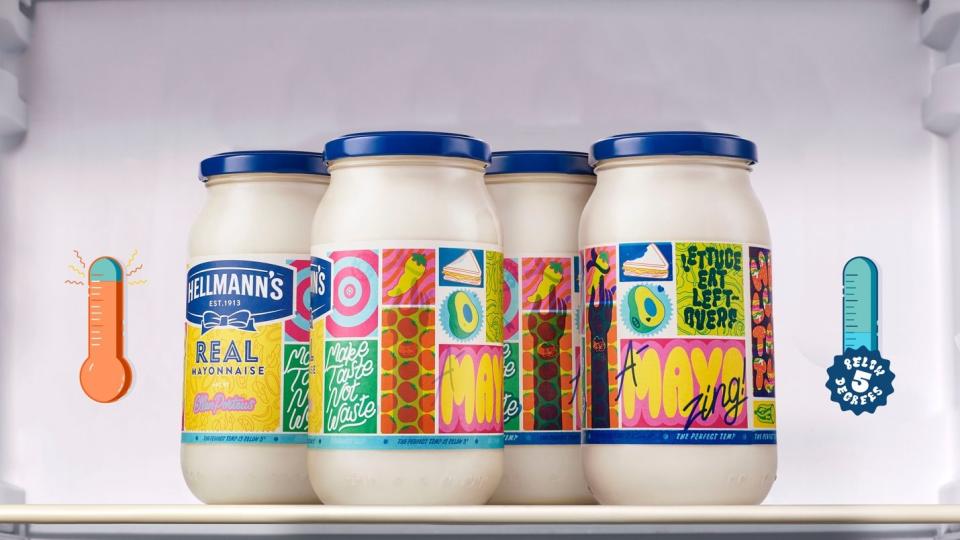The Small Mistake You're Making That Coud Be Making Your Food Go Off Quicker
Our fridges and freezers are absolutely essential when it comes to preventing food waste, whether that's creating the perfect environment for meal prepping your dinner for the week or just keeping produce fresh.
However, according to a report by WRAP, millions of us are keeping our fridges at the wrong temperature. This means that all that hard work prepping your fruit, veg or weeknight curry might be going to waste.
In fact, a study by WRAP in collaboration with Hellmann's found food waste costs the average British family around £700 a year. That's a fancy holiday or A LOT of your favourite takeaway.
But how exactly can you tell if your fridge temperature has gone awry? Well, Hellmann's has launched a very special jar of its fan-favourite mayonnaise that helps you to know when your fridge is too warm.

The Smart Jar has a funky temperature-activated label designed by illustrator Ellen Porteus that changes its design when your fridge is set below 5℃ to reveal a hidden layer.
According to Hellmann's, certain foods can last up to 3 days longer in a fridge set below 5℃ (vs 7℃), including milk – one of the most wasted food products in your fridge. Every day 3.1 million glasses of milk are poured down the sink - that's a lot of milk!
Hellmann’s partner, climate action NGO WRAP, also has an online tool explaining how to set any brand of fridge to its correct temperature, which is handy once you get through your lovely jar of mayo.
So, what should your fridge temperature actually be?
Your fridge should be somewhere between 0 and 5°C. Anything over 8°C can result in nasty bacteria building up in your food, which not only makes it go bad, but could also make you ill.
What could cause your temperature to go higher in your fridge?
So, your fridge isn't actually automatically set within that magic 0 to 5°C range, so the main thing causing a higher temperature in your fridge could actually be that it's never been changed. You should use the instruction manual for your fridge (you can find loads of these online if you look up the model - we know it's easy to lose the paper copies...) to change it.
It could also be caused by an old, unreliable fridge. So even though it's a big investment, it could save you money in the long term to have a nice new fridge with a fridge thermometer to keep an eye on the temp as you go.
What's the best way to stack a fridge
While many of us adopt a "shove it in and hope for the best" approach when it comes to storing food in the fridge, unsurprisingly this isn't the most efficient or economic way to do it. This is because your fridge will vary in temperature between shelves.
The top shelves should be reserved for things that don't need to be cooked before eating like olives or cured meats.
Middle shelves should be the realm of dairy products like cheese, butter, yoghurt and eggs (if you swing that way with egg storage).

Bottom shelves should be for raw meat, chicken and seafood. This isn't only because it's one of the coldest parts of the fridge, but also because if any packaging breaks you won't get raw meat or fish juices on the rest of your fridge bits.
Drawers, wherever they are in the fridge, are best for fruit and veg. However, due to fruit's ethylene-producing quality (the natural gas that increases the ripeness of foods) it should be stored separately to veg where possible.
The fridge door is one of the warmest parts of the fridge, so make sure you're not storing anything that needs proper refrigeration in there, like condiments.


